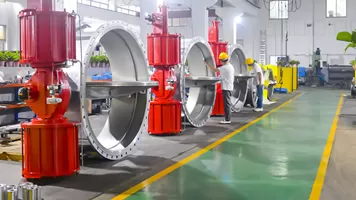As an important member of valves, ball valves are widely used in numerous industrial fields. With its unique structure and performance characteristics, it plays a crucial role in fluid control. The following will detail the types and classification of ball valves.
I. Classification according to the structure of the ball valve
-
Floating ball valve
The ball of a floating ball valve is floating. Under the action of medium pressure, the ball can produce a certain displacement and tightly press on the sealing surface at the outlet end to ensure the sealing at the outlet end. This kind of ball valve has a simple structure and good sealing performance. However, the load of the working medium on the ball is completely transmitted to the outlet sealing ring, so it is necessary to consider whether the sealing ring material can bear the working load of the ball medium. It is suitable for medium and low pressure and small-diameter pipeline systems. -
Fixed ball valve
The ball of a fixed ball valve is fixed and does not move after being pressurized. It uses the upper and lower valve stems to fix the ball. While the operating torque is small, the sealing performance is also very reliable. The fixed ball valve generally has a floating valve seat. Under the action of medium pressure, the valve seat can produce a certain displacement to make the sealing surface fit more closely, thereby improving the sealing effect. It is often used in high-pressure and large-diameter pipelines, such as in the transportation of oil and natural gas.
II. Classification according to the connection method of the ball valve
-
Flanged ball valve
The flanged ball valve is mainly connected by flange. It has the advantages of firm connection and reliable sealing. It is relatively convenient to install and disassemble and is suitable for pipeline systems of various pressure levels. Flanged ball valves are widely used in industries such as chemical and electric power and can withstand large pressure and temperature changes. -
Threaded ball valve
The threaded ball valve is connected to the pipeline through threads. It has a compact structure and small installation space, especially suitable for some occasions with limited space. However, the sealing performance of the threaded connection may be relatively weaker than that of the flange connection, and the applicable pressure and pipe diameter range also has certain limitations. Threaded ball valves are often used in small pipeline systems, such as household gas pipelines and plumbing systems. -
Welded ball valve
The welded ball valve is connected to the pipeline by welding. This connection method has the characteristics of good sealing and high strength and can withstand high pressure and vibration. The welded ball valve is suitable for some occasions with strict sealing performance requirements and harsh working environments, such as high-temperature and high-pressure pipeline systems in chemical plants. However, the welded connection is relatively troublesome during installation and maintenance, and once the welding is completed, it is more difficult to disassemble.
III. Classification according to the driving method of the ball valve
-
Manual ball valve
The manual ball valve is controlled to open and close by manually operating the handle or handwheel. It has the advantages of simple structure, low cost, and high reliability and is suitable for some occasions with low operating frequency and relatively low requirements for control accuracy. Manual ball valves are widely used in small pipeline systems and some temporary fluid control. -
Electric ball valve
The electric ball valve is driven to open and close by an electric actuator. It can realize remote control and automatic operation, with convenient and fast operation and high control accuracy. Electric ball valves are suitable for large pipeline systems that require frequent operation and high control accuracy, such as industrial automation production lines and urban water supply and heating systems. -
Pneumatic ball valve
The pneumatic ball valve uses compressed air as the power source to drive the ball valve to move. It has the characteristics of rapid action, sensitive response, and high reliability and is suitable for some occasions with high requirements for response speed, such as emergency shutdown in chemical production. At the same time, the pneumatic ball valve has better safety in flammable and explosive environments because it will not produce dangerous factors such as electric sparks.

